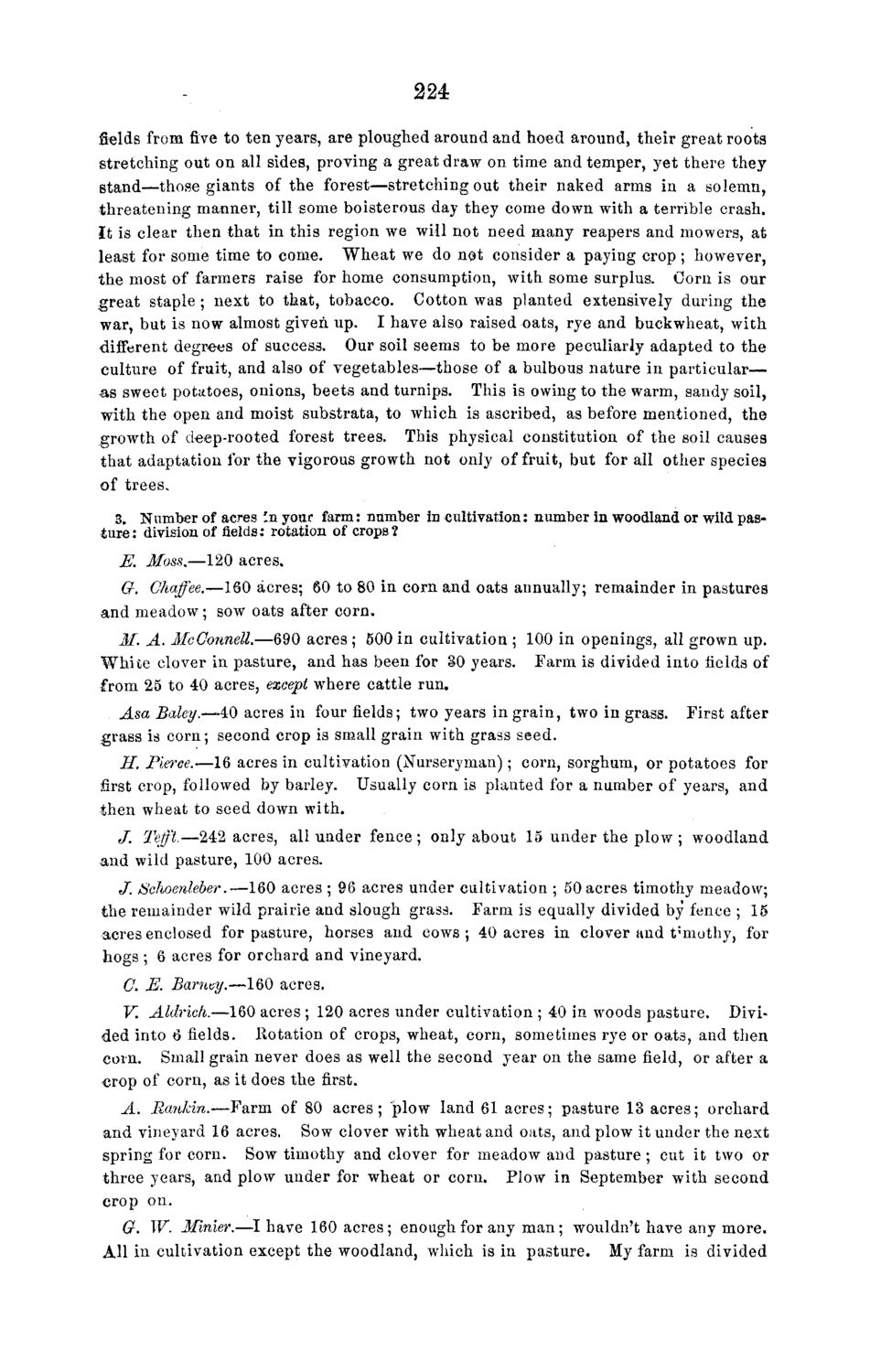| |
| |
Caption: Board of Trustees Minutes - 1868
This is a reduced-resolution page image for fast online browsing.

EXTRACTED TEXT FROM PAGE:
224 fields from five to ten years, are ploughed around and hoed around, their great roots stretching out on all sides, proving a great draw on time and temper, yet there they stand—those giants of the forest—stretching out their naked arms in a solemn, threatening manner, till some boisterous day they come down with a terrible crash. It is clear then that in this region we will not need many reapers and mowers, at least for some time to come. Wheat we do not consider a paying crop ; however, the most of farmers raise for home consumption, with some surplus. Corn is our great staple ; next to that, tobacco. Cotton was planted extensively during the war, but is now almost given up. I have also raised oats, rye and buckwheat, with different degrees of success. Our soil seems to be more peculiarly adapted to the culture of fruit, and also of vegetables—those of a bulbous nature in particular— as sweet potatoes, onions, beets and turnips. This is owing to the warm, sandy soil, with the open and moist substrata, to which is ascribed, as before mentioned, the growth of deep-rooted forest trees. This physical constitution of the soil causes that adaptation for the vigorous growth not only of fruit, but for all other species of trees. 3. Number of acres in your farm: number in cultivation: number in woodland or wild pasture: division of fields: rotation of crops? & Moss.—120 acres. G. Chaffee.—160 acres; 60 to 80 in corn and oats annually; remainder in pastures and meadow ; sow oats after corn. M. A. McGonnell.—690 acres ; 500 in cultivation ; 100 in openings, all grown up. White clover in pasture, and has been for 30 years. Farm is divided into fields of from 25 to 40 acres, except where cattle run. Asa Baley.—&0 acres in four fields; two years ingrain, two in grass. First after grass is corn; second crop is small grain with grass seed. H. Pierce.—16 acres in cultivation (Nurseryman); corn, sorghum, or potatoes for first crop, followed by barley. Usually corn is planted for a number of years, and then wheat to seed down with. / . Tefft.—-242 acres, all under fence ; only about 15 under the plow ; woodland and wild pasture, 100 acres. J. Schoenleber.—160 acres ; 96 acres under cultivation ; 50 acres timothy meadow; the remainder wild prairie and slough grass. Farm is equally divided by fence ; 15 acres enclosed for pasture, horses and cows ; 40 acres in clover and timothy, for hogs ; 6 acres for orchard and vineyard. G. E. Barney.—160 acres. V. Aldrich.—160 acres ; 120 acres under cultivation ; 40 in woods pasture. Divided into 6 fields. Rotation of crops, wheat, corn, sometimes rye or oats, and then corn. Small grain never does as well the second year on the same field, or after a orop of corn, as it does the first. A. Rankin.—Farm of 80 acres; "plow land 61 acres; pasture 13 acres; orchard and vineyard 16 acres. Sow clover with wheat and oats, and plow it under the next spring for corn. Sow timothy and clover for meadow and pasture ; cut it two or three years, and plow under for wheat or corn. Plow in September with second crop on. G. W. Minier.—I have 160 acres; enough for any man; wouldn't have any more. All in cultivation except the woodland, which is in pasture. My farm is divided
| |